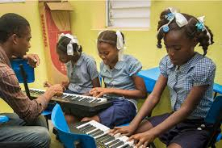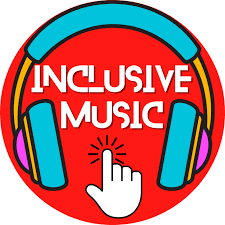Creating Inclusive Harmony: Fostering a Welcoming Environment in School Music Programs
- Tammy R. White
- Feb 12
- 3 min read
Music has an incredible power to unite people, crossing boundaries and forming communities. Yet, many individuals still find inclusive music programs out of reach.
Creating environments where everyone can express themselves musically is vital. Inclusivity is not a one-time task but an ongoing commitment. This blog post will explore effective ways to build welcoming music programs that engage and uplift all participants.
Kendrick Lamar’s halftime performance symbolized both protest and patriotism.
“The event framed itself in self-conscious terms. ‘This is the great American game,’ Samuel L. Jackson, dressed as Uncle Sam, proclaimed at the introduction of the performance.” This framing set the stage for Kendrick Lamar’s set, one that masterfully blended artistic expression with social commentary. Lamar has built his career on addressing systemic issues while also embracing the idea of striving for something greater embodying both protest and patriotism in a single breath.
As the social conscience of his generation of rappers, Lamar knew he was expected to make a statement. After all, he is a Pulitzer Prize winner for his groundbreaking album DAMN., a project that marked a significant moment in hip-hop and mainstream music. Dismissing his performance as “whack,” claiming no one knows who he is, or saying he was “mumbling” is a lazy and superficial take. Lamar is a highly accomplished, multi-Grammy-winning, beloved artist, and this was his second time performing at the Super Bowl. If you didn’t enjoy it, just say you don’t like rap music or aren’t interested in taking the time to understand the cultural significance of his artistry.
As a music educator, I immediately anticipated the backlash from some within our field. Music education has long struggled with an elitist mentality that prioritizes certain genres while dismissing others as less. This is the same mindset that sparks outrage whenever the Star-Spangled Banner is sung with any variation from its traditional form. While I often find amusement in these critiques, they also highlight a more serious issue: the inability to accept artistic expression outside of a narrow, classical framework. This exclusionary mindset has created an uncomfortable reality for educators and students from diverse musical and cultural backgrounds.
Kendrick Lamar’s music, much like classical music, demands something of the listener—it requires engagement on its own terms. So, as music educators, we must ask ourselves: Are we dismissive of students’ musical backgrounds because they differ from our own? Are we reluctant to support students who require extra effort because they lack the privileges of private lessons or prior exposure to formal music training? These are uncomfortable but necessary questions.
At a time where diversity and inclusion are under attack, if we want to foster truly inclusive music programs, we must take intentional steps to ensure that all students feel seen and valued. UNDERSTAND YOUR AUDIENCE…Here are a few ways to start:
1. Diversify the Repertoire – Include music from various genres, cultures, and traditions. If classical and wind band literature are the only sounds in your classroom, you are missing an opportunity to connect with and educate your students in a meaningful way.
2. Honor Student Backgrounds – Allow students to share their musical influences. Whether it’s hip-hop, gospel, jazz, Latin, or folk music, recognize that these genres have deep cultural significance and musical value.
3. Challenge Biases – Reflect on internalized biases about what constitutes “real” music. Dismissing certain styles as lesser only alienates students and reinforces systemic barriers in music education.
4. Expand Teaching Methods – Not all students have access to private lessons or prior music experience. Be mindful of different learning styles and provide resources that help level the playing field.
5. Encourage Musical Exploration – Let students compose, improvise, and arrange music in ways that resonate with them. Giving students ownership over their musical experiences fosters creativity and engagement.
Music is not a monolith, and neither should music education be. Kendrick Lamar’s halftime performance was a reminder that powerful artistry comes in many forms. As educators, it is our responsibility to nurture an environment where all students, regardless of their musical background, can thrive. The question isn’t whether hip-hop belongs in music education—it’s whether we, as educators, are willing to evolve and embrace the full spectrum of musical excellence.
Let’s ensure that our classrooms reflect the world of music as it truly is: diverse, dynamic, and deeply meaningful to the students we serve.





Opmerkingen